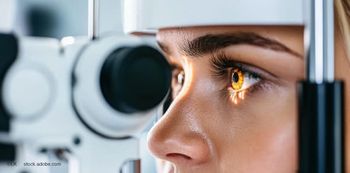
AGC Biologics to manufacture AAVantgarde’s dual-vector gene therapies, AVB-039 and AAVB-081
Key Takeaways
- AAVantgarde and AGC Biologics collaborate to manufacture dual-vector gene therapies for inherited retinal disorders, AAVB-039 and AAVB-081.
- AAVantgarde secured $141 million in Series B funding to support clinical trials for AAVB-039 and AAVB-081.
Both therapeutics will leverage AGC Biologics’ BravoAAV suspension platform and use an innovative dual AAV vector approach, which splits the therapeutic gene into 2 halves.
AAVantgarde and AGC Biologics have entered into an agreement in which AGC Biologics will provide Good Manufacturing Practice manufacturing for AAVantgarde’s dual-vector gene therapies for inherited retinal disorders, AAVB-039 and AAVB-081.1
Most recently, AAVantgarde Bio announced the successful closing of a $141 million (€122 million) Series B financing round that was co-led by a new lead, Schroders Capital, as well as existing investors Atlas Venture and Forbion.2 The company noted funding will support the completion of the clinical PoC of its AAVB-039 CELESTE study assessing safety, tolerability, and preliminary efficacy of AAVB-039 in patients with Stargardt disease across 3 dose levels for Stargardt disease and the completion of the STELLA natural history study.
AAVantgarde’s AAVB-039 program addresses mutations in the ABCA4 gene, the root genetic cause of Stargardt disease, by delivering the full-length ABCA4 protein, enabling treatment of any patient, regardless of the specific mutation. AAVB-039 is currently in a first-in-human phase 1/2 clinical trial in the US, UK, and Europe.
AAVB-081 is being evaluated for the treatment of retinitis pigmentosa and is in phase 1/2 development and represents the first-ever dual AAV gene therapy tested clinically in an ocular indication, according to the company.1
Both therapeutics will leverage AGC Biologics’ BravoAAV suspension platform and use an innovative dual AAV vector approach, which splits the therapeutic gene into 2 halves. When administered, both vectors enter the target cell and are reassembled to form the complete, functional gene. This enables the treatment of diseases that were previously out of reach for the standard single-vector approach due to the AAV vector's limited capacity of 4.7 kilobases, according to the company.1
Natalia Misciattelli, CEO of AAVantgarde, commented on the partnership, saying, This partnership marks an important milestone for AAVantgarde as we continue to advance our innovative gene therapy pipeline in the clinic. Working with AGC will ensure that we have access to the highest quality manufacturing capabilities, enabling us to deliver transformative therapies for patients."
Luca Alberici, executive vice president of AGC Biologics’ Global Cell & Gene Technologies Division, added, “This collaboration with AAVantgarde allows us to contribute to the noble mission of addressing this significant unmet medical need and showcase our technical precision across many vector types as well as various stages of clinical development.”
The AGC Biologics Milan Cell and Gene Center of Excellence will support manufacturing for early- and late-phase clinical supply for the 2 therapeutics.1
References:
AGC Biologics to Manufacture AAVantgarde’s Dual-Vector Gene Therapies for Inherited Retinal Disorders. Published November 21, 2025. Accessed November 24, 2025.
https://www.businesswire.com/news/home/20251121749451/en/AGC-Biologics-to-Manufacture-AAVantgardes-Dual-Vector-Gene-Therapies-for-Inherited-Retinal-Disorders Harp MD. AAVantgarde Bio closes $141 million Series B financing round. Published November 3, 2025. Accessed November 24, 2025.
https://www.ophthalmologytimes.com/view/aavantgarde-bio-closes-141-million-series-b-financing-round
Newsletter
Don’t miss out—get Ophthalmology Times updates on the latest clinical advancements and expert interviews, straight to your inbox.













































.png)


